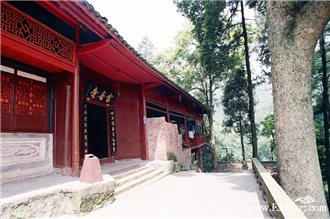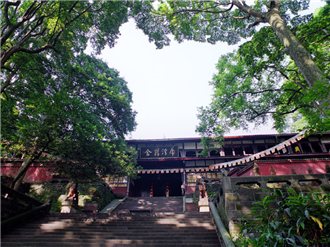-
31th August, 2015
Leiyin Temple
Started building in Ming Dynasty (1368-1466), it was called Moksha Temple or Guanyin ( Avalokitesvara) Hall, and renamed Leiyin Temple in 1884. The temple is built on Moksha Slope and close to the rock, making full use of the narrow landform. Stilted building enlarges the volume and dimension of the building. The furnishings in the temple are simple, with highlights on the stilted house, pillars, -
31th August, 2015
Bujinlin Forest
Situated between Baoguo Temple and Fuhu Temple, it is one of the four Buddhism forests in Mt. Emei which was planted by Jiwan Monk in Qing Dynasty (1644-1911) according to the characters in Mahayana Sutra. There are more than 109,000 trees in the forest, with dense and verdant Phoebe zhennan, towering pine trees, and ferns and moss which are like a blanket covering the earth. The atmosphere of Bud -
31th August, 2015
Away from Dirt and Filth
Fuhu Temple, hidden in deep forests, is quiet and secluded. When tourists enter the temple, they will see a horizontal tablet with the inscription by the Emperor Kangxi (1654-1722) in Qing Dynasty: “Dust-free Garden” hanging under the double eaves of the Samantabhadra Hall, because although the temple is surrounded by towering trees, no fallen leaves will be piled up on the roof. There are severa



